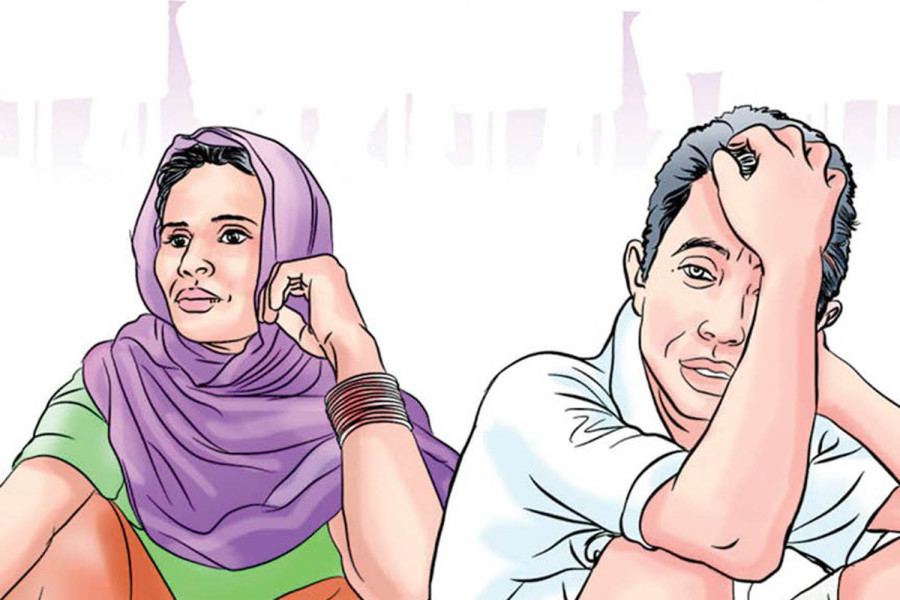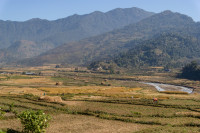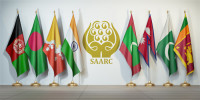Opinion
Constitution and the status of Dalits
Dalits continue to suffer violent and inhumane treatment, including murder and social ostracisation.
Sushil Darnal
It has been nine years since the promulgation of the Constitution of Nepal, which promises to “end class, caste, regional, linguistic, religious and gender discrimination” and ensure economic equality, prosperity and social justice. The Constitution envisions creating an egalitarian society founded on the principles of proportional inclusion and participatory governance. In line with this, the Preamble resolves to eliminate caste-based discrimination and to promote an inclusive and equitable society.
Under the Fundamental Rights, Article 40 ('Rights of Dalits') guarantees that Dalits shall have the right to participate in all organs of the state in accordance with the principle of proportional inclusion. Despite these constitutional provisions, Dalit participation in state organs, particularly the executive and legislative branches, remains alarmingly low. According to Article 76 (9), ministers must be appointed from among the members of the Council of Ministers and the Federal Parliament based on the principle of inclusion. Additionally, Article 42 (1) affirms that the socially backward sections of society, including Dalits, have the right to participate in state organs through the principle of inclusion.
While these provisions guarantee proportional participation, the reality does not follow the constitutional intent. Dalit representation in the national parliament is minimal, and the situation in the executive is even more concerning. Only 16 Dalits (5.81 percent) are currently represented in the House of Representatives, even though Dalits comprise approximately 13 percent of the country’s total population. In the 2007 Constituent Assembly, there were 50 Dalit representatives (8.32 percent), which declined to 40 (6.65 percent) in the 2013 Constituent Assembly. The representation of Dalits dropped to 20 (7.27 percent) in the 2017 House of Representatives.
A similar trend can be seen in the 59-member National Assembly, where only eight Dalits are present, further reflecting the disparity in political representation. Moreover, the Council of Ministers is devoid of Dalit representation, a glaring disregard for the constitutional commitment to proportional inclusion. While Rupa BK has been appointed as a State Minister at the Ministry of Forest and Environment, this is only a symbolic gesture rather than a substantive inclusion. In the 2007 Council of Ministers, two Dalits—Khadga Bahadur Bishwakarma and Chhabilal Bishwakarma—were appointed as cabinet ministers; however, the representation of Dalits has dwindled since then. At present, there are no Dalits in the 22-member Cabinet.
Another significant failure is the lack of meaningful legislation or measures to address the issues of Dalits. Despite the constitutional promise to end untouchability and discrimination, Article 24 (“Right against Untouchability and Discrimination”) prohibits discrimination based on caste, ethnicity, or profession in any public or private space. However, this provision remains largely unenforced, as demonstrated by the continued prevalence of caste-based violence and discrimination. While a step forward, the Caste Discrimination and Untouchability (Offences and Punishment) Act, 2011 has also been ineffective.
Dalits continue to suffer violent and inhumane treatment, including sexual violence, murder and social ostracisation, particularly in rural areas. Numerous Dalits have been subjected to violence for drawing water, cooking, entering temples, or engaging in inter-caste marriages. Cases like the rape and murder of Angira Pasi in Rupandehi, the killing of Tikaram Nepali in Rukum for supporting an inter-caste love affair and the brutal treatment of Muna Sarki in Kalikot underscore the deep-rooted violence and discrimination Dalits are subjected to. Even after the enactment of the Caste Discrimination and Untouchability (Offences and Punishment) Act, at least 20 Dalits have been killed due to caste-based violence. These are blatant examples of the existing gap between legal frameworks and their enforcement in protecting Dalits.
The indifference of authorities toward caste-based violence and discrimination reflects a broader societal apathy toward the plight of Dalits. While the global discourse is dominated by technological advancements and scientific innovations, Dalits in Nepal are still struggling for their basic human dignity and rights. Although, the governance system has undergone significant transformation, with promises of national progress, the situation remains unchanged for Dalits. Entrenched social hierarchies stifle their aspirations for equality, recognition and opportunity.
The Dalit community is positioned at the bottom of the Human Development Index (HDI), with limited access to education, healthcare, employment and political power. Given the historical oppression of the Dalit community, it is imperative that the government swiftly enacts a unified law that addresses the multifaceted issues Dalits face. Such a law should not only criminalise caste-based discrimination and untouchability but also ensure the active and meaningful participation of Dalits in political, economic and social spheres.
Without a robust legal framework and a commitment to enforcing it, the constitutional promises made to Dalits will remain mere words on paper. Only through genuine political will, supported by comprehensive laws, can Dalits hope to transcend their historical marginalisation and achieve the equality and dignity that the Constitution guarantees them. The time has come for the state to deliver on its promise of justice and ensure that the Dalit community is not left behind.




 16.12°C Kathmandu
16.12°C Kathmandu










